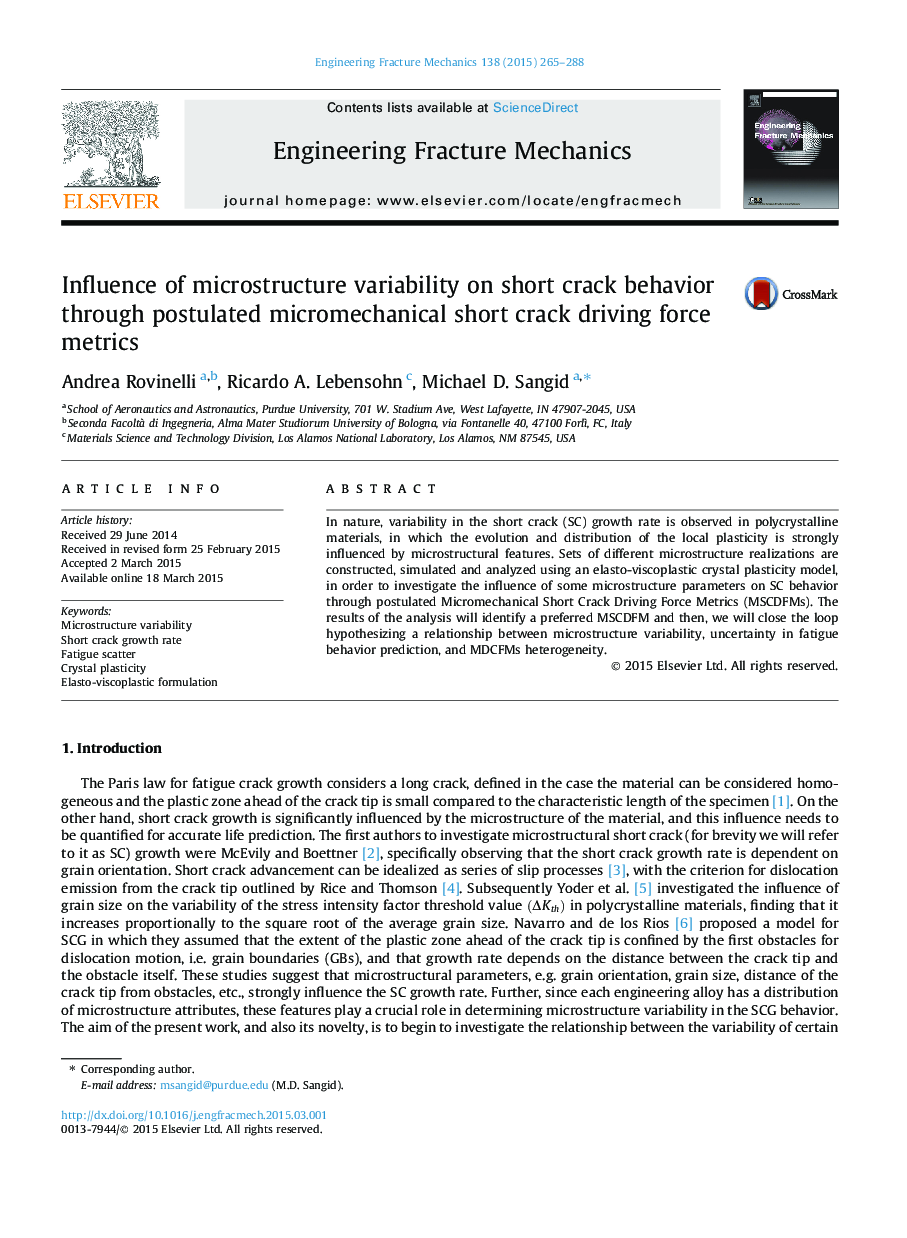| Article ID | Journal | Published Year | Pages | File Type |
|---|---|---|---|---|
| 770264 | Engineering Fracture Mechanics | 2015 | 24 Pages |
•Investigate slip activity near a crack tip using an elasto-viscoplastic CP-FFT model.•Analyze different microstructure realizations to investigate microstructure variability in short crack growth behavior.•Calculate fatigue indicator parameters (FIP) as possible driving forces for short crack growth.•Based on FIP fields, postulated potential crack paths, grain shielding, and crack bifurcation.•Microstructure variability is linked to scatter in the crack growth rates in stage 1 of the Paris diagram.
In nature, variability in the short crack (SC) growth rate is observed in polycrystalline materials, in which the evolution and distribution of the local plasticity is strongly influenced by microstructural features. Sets of different microstructure realizations are constructed, simulated and analyzed using an elasto-viscoplastic crystal plasticity model, in order to investigate the influence of some microstructure parameters on SC behavior through postulated Micromechanical Short Crack Driving Force Metrics (MSCDFMs). The results of the analysis will identify a preferred MSCDFM and then, we will close the loop hypothesizing a relationship between microstructure variability, uncertainty in fatigue behavior prediction, and MDCFMs heterogeneity.
